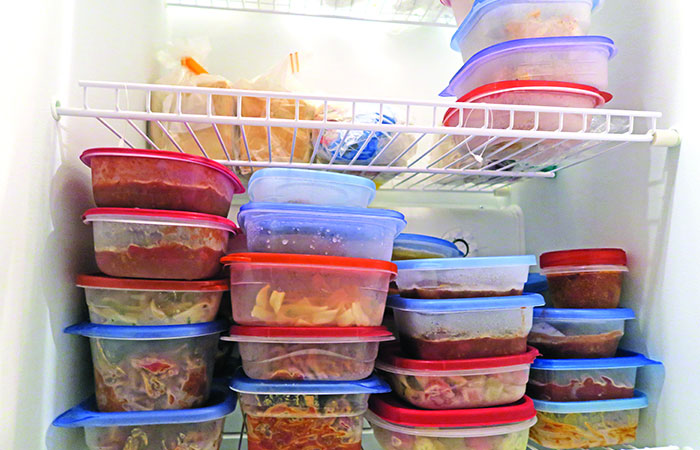Elegir opciones saludables no tiene por qué ser costoso. Presentamos 10 consejos para ayudarte a comprar, cocinar y comer saludable con un presupuesto limitado.

10 consejos para alimentarse mejor con un presupuesto limitado
- Home
- Live Well Blog
- 10 consejos para alimentarse mejor con un presupuesto limitado
noviembre 29, 2023
General / Familia


Usa lo que ya tienes.
Antes de ir a la tienda, revisa el congelador, las alacenas y el refrigerador. Toma nota de lo que ya tienes a mano. Usa estos productos en tus comidas de la semana para ahorrar dinero y reducir el desperdicio de alimentos.
Prueba nuevas recetas.
Busca recetas en línea que incluyan ingredientes que tengas a mano.
Puedes buscar ideas en https://myfridgefood.com/ o https://www.bigoven.com/.
Piensa en tu rutina.
Elige comidas que puedas preparar fácilmente cuando no tengas mucho tiempo. Guarda las recetas que requieran más tiempo para los días más tranquilos.
Planifica el uso de las sobras.
Piensa en preparar recetas cuantiosas con suficientes porciones para tener varias comidas. Esto puede reducir la cantidad de ingredientes a comprar y te ahorrará tiempo al no tener que preparar otra comida.
¡Haz una lista de compras y apégate a ella!
Ahorrarás dinero si solo compras lo que necesitas. Mira los anuncios de la tienda para conocer las ofertas semanales.


No salgas de compras con hambre.
Si haces las compras después de comer, será más fácil evitar la tentación de los bocadillos y tendrás más presupuesto para adquirir vegetales y frutas.
Compra alimentos de temporada.
Comprar frutas y vegetales de temporada puede reducir los costos y sumar frescura. Por ejemplo, compra fresas frescas en junio o julio. Si no vas a utilizarlas de inmediato, compra las que todavía les falte madurar. Congela los frutos rojos cuando estén de oferta para tener esta deliciosa fruta disponible todo el año.
Cocina una vez... come toda la semana.
Prepara una tanda grande de tus recetas favoritas y duplica o triplica las cantidades. Congela por porciones en contenedores individuales para comer durante la semana.
Llena tu plato de frutas y vegetales.
Están llenos de nutrientes, te ayudan a tener buena salud y pueden hacerte sentir más satisfecho por más tiempo. Elige una variedad de colores para tener una mezcla de sabores y texturas.
Bebe más agua.
Mantente hidratado bebiendo agua en lugar de bebidas dulces, como refrescos o bebidas isotónicas. Siempre ten a mano una botella de agua reutilizable.